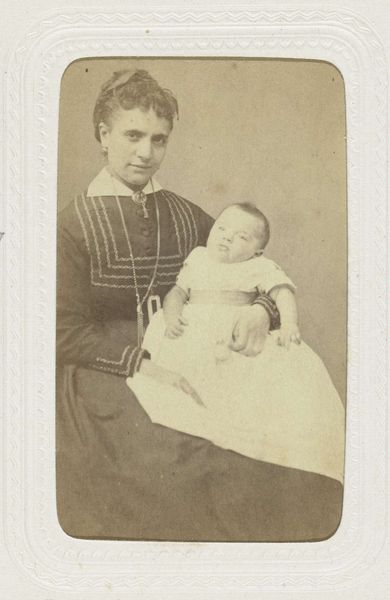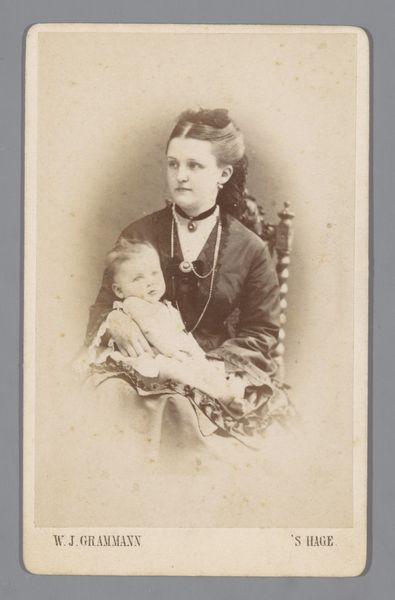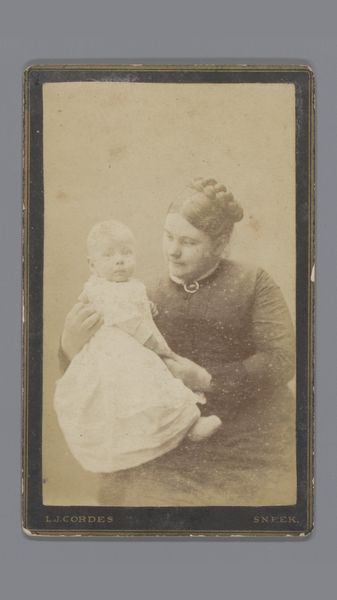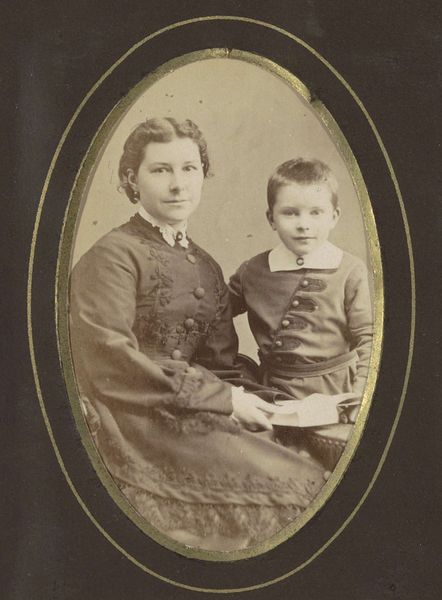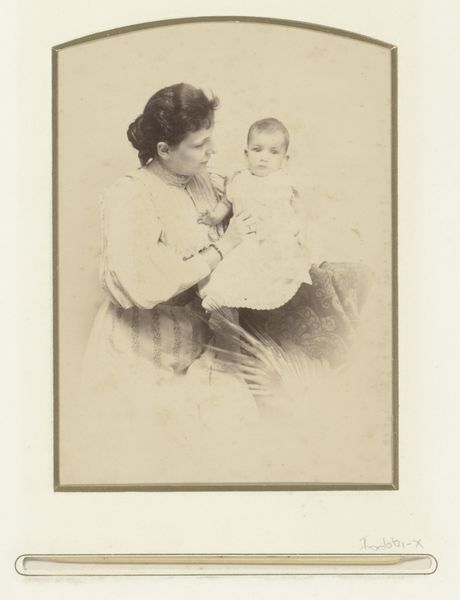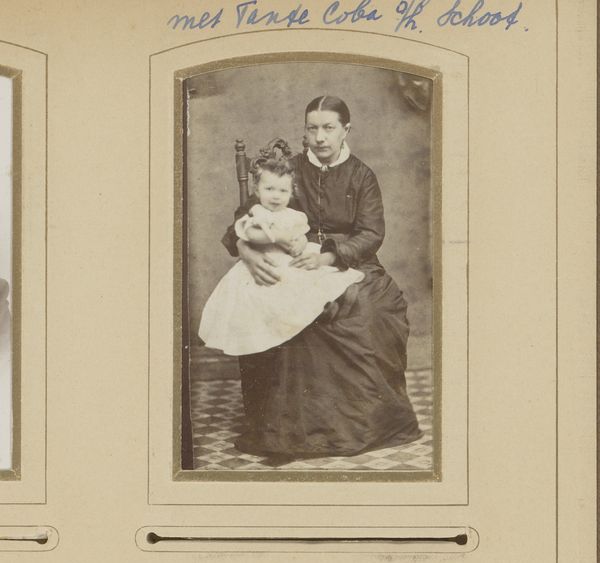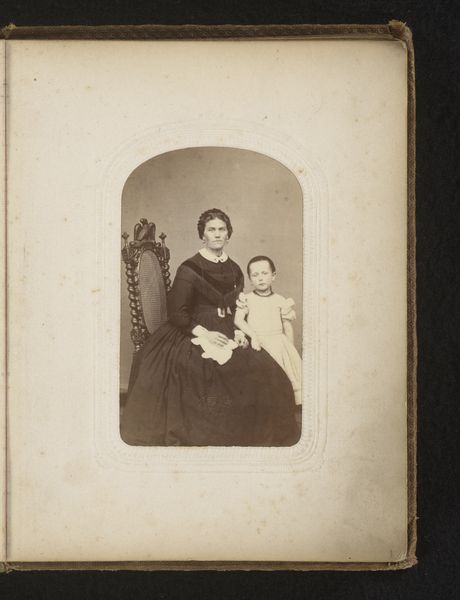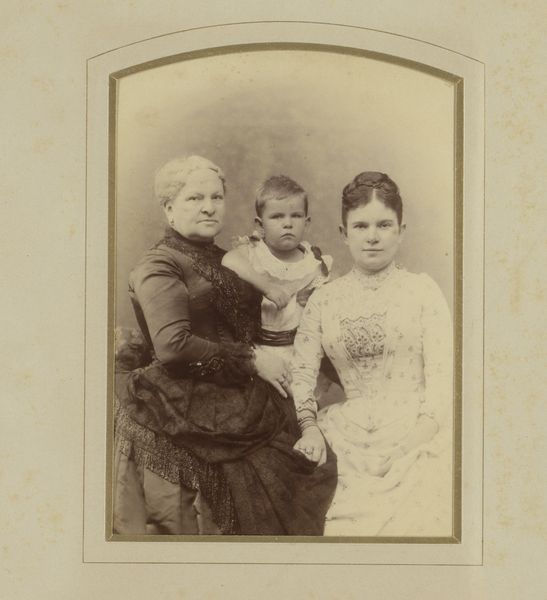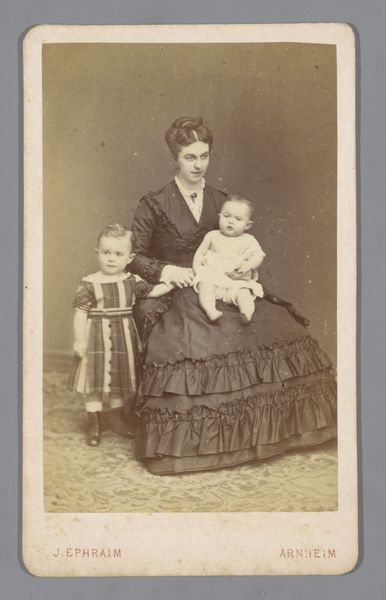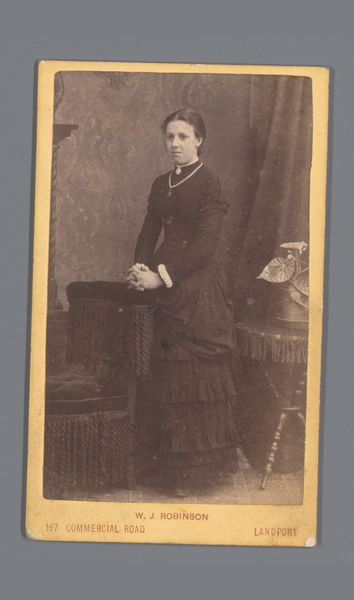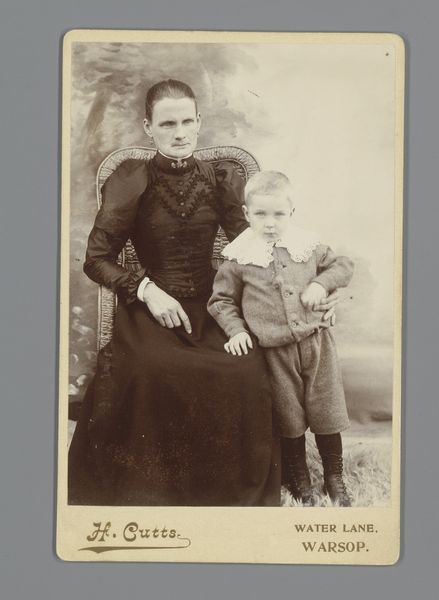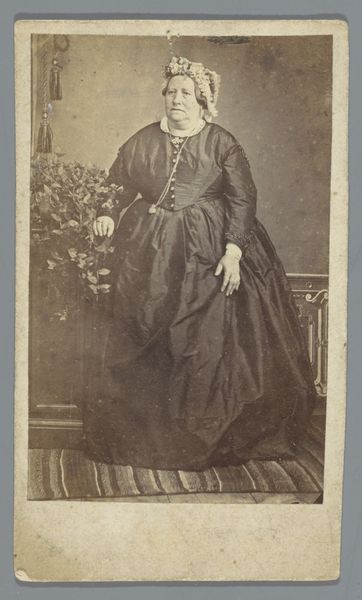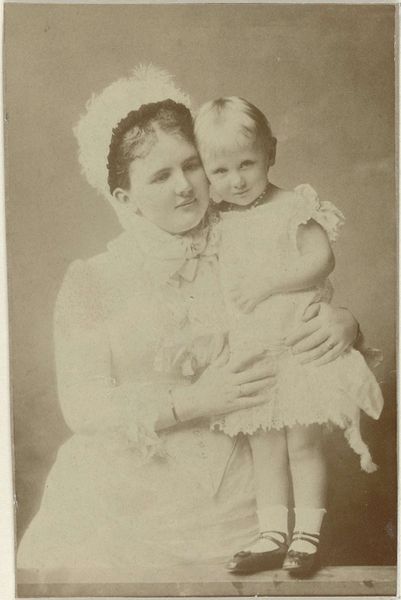
photography, albumen-print
#
portrait
#
figuration
#
photography
#
historical photography
#
19th century
#
genre-painting
#
dress
#
albumen-print
Dimensions: height 92 mm, width 58 mm, height 102 mm, width 63 mm
Copyright: Rijks Museum: Open Domain
Curator: Here we have "Portret van een vrouw in een jurk met een baby op schoot", which translates to "Portrait of a Woman in a Dress with a Baby in her Lap." It's an albumen print from the late 19th century, likely taken between 1870 and 1897 by Lodewijk Hendrikus Serré. Editor: Wow, it feels instantly…stiff, almost like taxidermy for the soul. The way they're posed—rigid, frontal—it’s a world away from the candid snapshots we’re used to. Makes me wonder what a smile would cost back then? Curator: Exactly! Portraiture at this time was often about projecting respectability, particularly for the rising middle class. The formal attire, the composed expression—it's all part of constructing a carefully curated public image, very different than how families express themselves today. Editor: I'm struck by the contrast in textures: her dark, almost brooding dress versus the baby's pristine white gown. Is that deliberate? Like innocence against experience? Or maybe just easier to clean? Curator: The visual contrast likely plays a role. Dark fabrics were common but could appear almost uniformly black in these photographs. Light-colored clothing would have helped highlight the baby in the image. It could symbolize the traditional contrast you mentioned, but practicality often guided photographic decisions too. Consider also how studio lighting limitations often influenced dress choices in portraits such as this. Editor: I keep coming back to the woman's expression. Stoic, almost weary. I bet getting that baby to cooperate for even a single shot was a Herculean task. You know, you look at this and suddenly all those Instagram moms seem a whole lot less annoying! Curator: Indeed. Child portraiture, or including children in adult portraits, presented numerous technical challenges in early photography. Long exposure times meant subjects needed to remain still—a challenge even for adults, let alone infants! Serré and his contemporaries had to carefully consider how to achieve a clear image despite these limitations, and we can infer something about social ideals in the poses and arrangement itself. Editor: Makes you wonder what became of them, doesn’t it? Their little lives, frozen in this one fleeting, sepia-toned moment. Maybe she did great things. Maybe the baby ran off and joined the circus. One will never know. It definitely triggers one's imaginative reflections to go further with them. Curator: Well, Serré’s work and other images of his time can serve as windows into societal norms, technological advancements, and the very human desire for memorialization. It reminds us to appreciate the complexity of seemingly simple images, to ask ourselves what stories they silently convey.
Comments
No comments
Be the first to comment and join the conversation on the ultimate creative platform.
